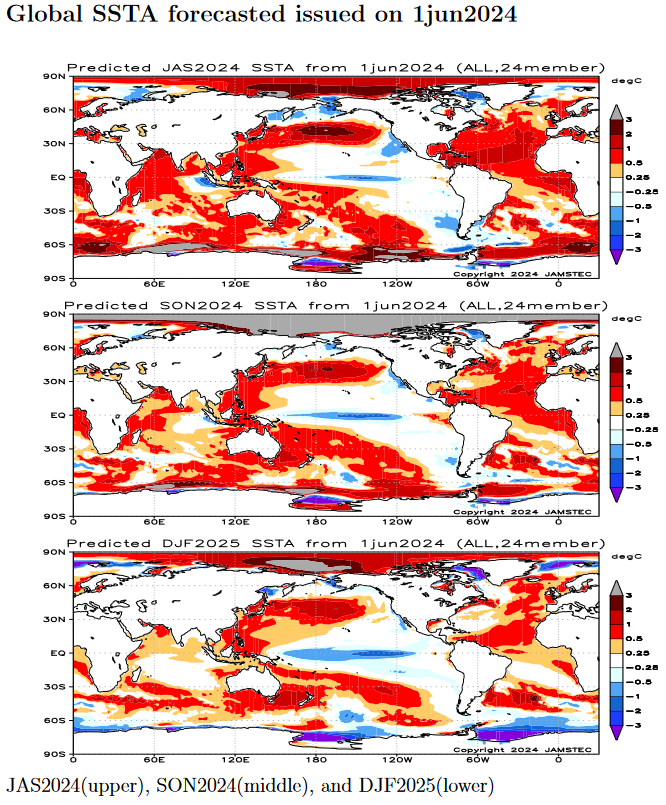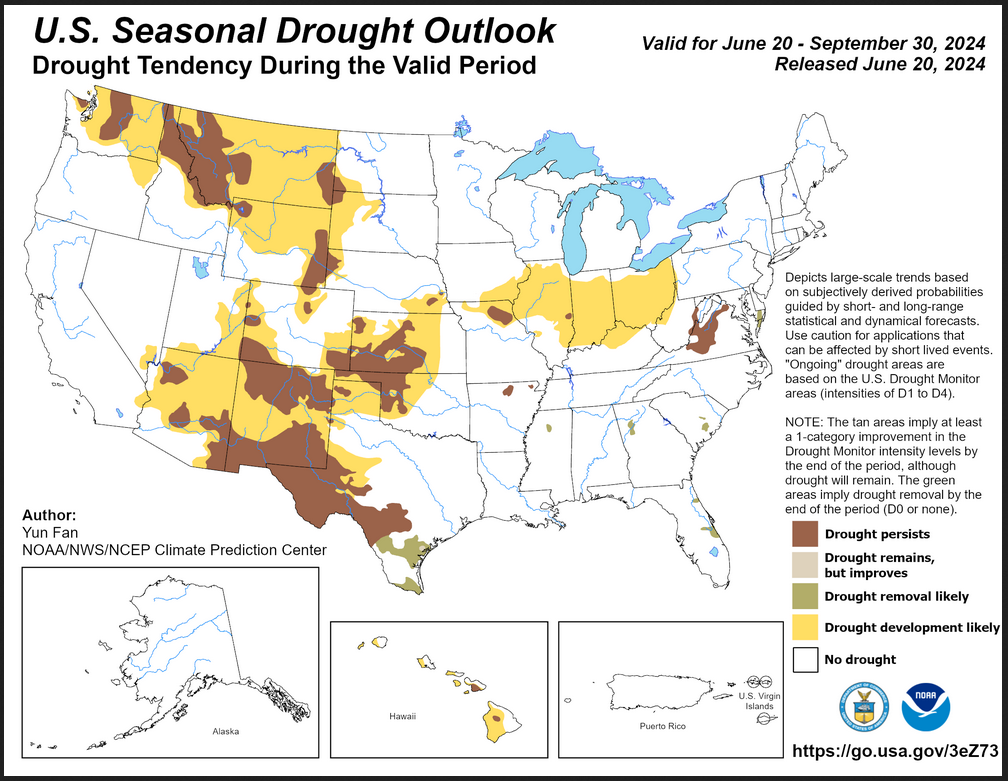Today Through the Fourth Friday (22 to 28 days) Weather Outlook for the U.S. and a Six-Day Forecast for the World: posted June 28, 2024
This article focuses on what we are paying attention to in the next 48 to 72 hours. The article also includes weather maps for longer-term U.S. outlooks and a six-day World weather outlook which can be very useful for travelers.
First the NWS Short Range Forecast. The afternoon NWS text update can be found here after about 4 p.m. New York time but it is unlikely to have changed very much from the morning update. The images in this article automatically update.
Short Range Forecast Discussion
NWS Weather Prediction Center College Park MD
Valid 00Z Fri Jun 28 2024 – 00Z Sun Jun 30 2024…Severe thunderstorms and flash flooding expected across portions of the
northern/central Plains today and into the Midwest Friday……Dangerously hot conditions will continue for parts of the South and
Southeast……Monsoon-like conditions persist today in the Four Corners region…
A strong upper level trough is swinging across the Pacific Northwest today
and pushing a surface frontal system southeast across the Intermountain
West into the northern and central Plains. Conditions will be supportive
of severe thunderstorm development this afternoon and evening across the
Plains, and the Storm Prediction Center has highlighted portions of the
northern and central Plains with an Enhanced Risk (level 3/5) of severe
thunderstorms today. Potential severe storm hazards will include very
large hail, significant damaging winds, and a few tornadoes. Locally heavy
downpours may lead to scattered instances of flash flooding across
portions of the Plains, especially where soils are saturated from recent
heavy rains. The WPC Excessive Rainfall Outlook includes two Slight Risk
areas (level 2/4) in the northern and central Plains where flash flooding
will be most likely.The Excessive Rainfall Outlook for today also highlights a Slight Risk
area (level 2/4) over the Four Corners region where persistent
monsoon-like rains are ongoing. Precipitation chances will decrease on
Friday for the Four Corners region as the frontal system approaches from
the north, but the front is forecast to stall and lift back northwards as
a warm front over the weekend. This will allow moisture to stream into the
Southwest ahead of the front, continuing rain chances in portions of
Arizona and New Mexico through the weekend.The frontal system will push across much of the Central U.S. and lift a
warm front north across the Lower Mississippi Valley on Friday.
Precipitation chances will spread east as the system progresses, expanding
the severe thunderstorm and flash flooding threats into portions of the
Midwest. The Storm Prediction Center has a Slight Risk (level 2/5) of
severe thunderstorms from the central Plains towards the Middle/Upper
Mississippi Valley on Friday, and WPC has a Slight Risk (level 2/4) of
Excessive Rainfall for this area as well. Potential storm hazards will be
large hail, damaging winds, a couple tornadoes, and locally heavy rain.This weekend, the broad frontal system will push into the eastern U.S.
while the back end lifts north across the Intermountain West.
Precipitation chances will extend from the Northeast down across the
Mid-Mississippi Valley to the central/southern Plains and Southwest. The
potential for severe weather will decrease as the upper level energy
becomes less organized, and the Storm Prediction Center has only a small
Slight Risk (level 2/5) of severe thunderstorms for much of Ohio and
western Pennsylvania. The risk for flash flooding will decrease as well,
and only isolated instances of flash flooding are anticipated along the
frontal system.Temperature-wise, dangerously hot conditions will persist across parts of
the South and Southeast through the weekend. High temperatures near 100
degrees will be common across the southern Plains and Texas, and high
temperatures will likely reach above 90 degrees each day in much of the
Southeast. High humidity will make these temperatures feel even hotter,
and heat indices may reach as high as 105-110 degrees. Daily summertime
convection will bring some relief to the Southeast, but mainly dry
conditions are forecast across Texas through the weekend. Overnight lows
will also remain above average in the 70s and 80s, providing little relief
from the heat.








